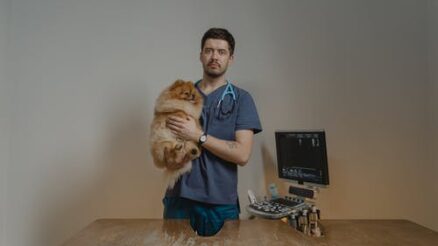You want to ensure your pet is healthy and happy as a pet owner. Although regular exercise, balanced food, and love help, several pet owners overlook oral care requirements. Teeth problems can cause discomfort, infections, and other well-being troubles that harm your pet’s lifestyle.
This article will cover all you must learn about dental procedures in pets, including why they are essential and what to anticipate during a dental procedure.
Read on to learn more.
Why Are Animal Dental Procedures Necessary?
Dental difficulties are frequent in pets and can lead to a number of health problems. Below are some of the most common oral issues in pets:
- Plaque and tartar buildup: This can cause bad breath, tooth decay, and periodontal ailment.
- Tooth fractures: This can be caused by trauma or eating hard objects.
- Abscesses: These are infections that can form in the tooth root or periodontal tissue.
- Gum disease: This serious infection impacts the gums and can cause tooth loss.
These dental conditions, if left unattended, can result in discomfort and infections and potentially cause more serious well-being conditions such as cardiovascular disease and kidney ailment. A number of surgical procedures are required to avoid and treat these problems when they develop.
Different Animal Dental Procedures
Depending on the state of their dental wellness, animals may need a variety of oral operations. These steps include the following:
Oral Checkups
A dental examination is a primary step in determining if oral cleaning is required. A cat or dog dentist might do pre-anesthetic blood examinations to ensure kidney and liver functions are satisfactory for anesthesia and an evaluation of the abdomen and heart. Anesthesia is essential to enable a tooth-by-tooth evaluation and dental X-rays.
Tooth Extractions
Tooth removals can be required if your pet’s teeth are severely damaged or infected. Under anesthetic, the damaged tooth is removed during this treatment to lessen discomfort and suffering.
Endodontic Therapies
Animals with teeth that can be recovered yet are damaged or diseased undertake root canal treatment. The veterinarian will fill the cavity with oral material to protect the tooth after removing the diseased or damaged tissue from the tooth.
Periodontal Surgery
When the vet needs to reach the tooth’s roots to extract damaged or infected tissue, gingival flap surgery is used. The gum tissue should be cut to reach the tooth root throughout this surgery.
You can visit the contact page of a veterinary facility to determine what to do in case of dental emergencies.
What to Anticipate Before the Surgery
Your pet will have a detailed oral examination by your vet before the dental procedure to determine the best course of action. They can also do specific blood tests to ensure your pet is healthy for anesthesia. Before the treatment, your pet may also require to fast for a particular time.
What to Anticipate During the Surgery
Your pet will be put to sleep throughout the oral treatment to prevent them from feeling pain or discomfort. Depending on your pet’s wellness, the vet will perform oral procedures, such as tooth extractions or root canal treatment. The procedure might last a few hours, depending on the technique and your pet’s health.
What to Anticipate After the Surgery
Your pet might have pain and pain after the oral procedure, and the vet may give painkillers. You might need to change the diet to ensure your pet can eat easily. To make sure that your pet heals well, it is important to follow the veterinarian’s aftercare suggestions.
Final Thoughts
Maintaining your pet’s general health and well-being requires dental care. Regular dental care for animals, such as exams and cleanings, may help prevent oral problems. However, oral surgery can be required if your pet has a severe oral problem. Call your veterinarian if you see any indications of dental concerns.


